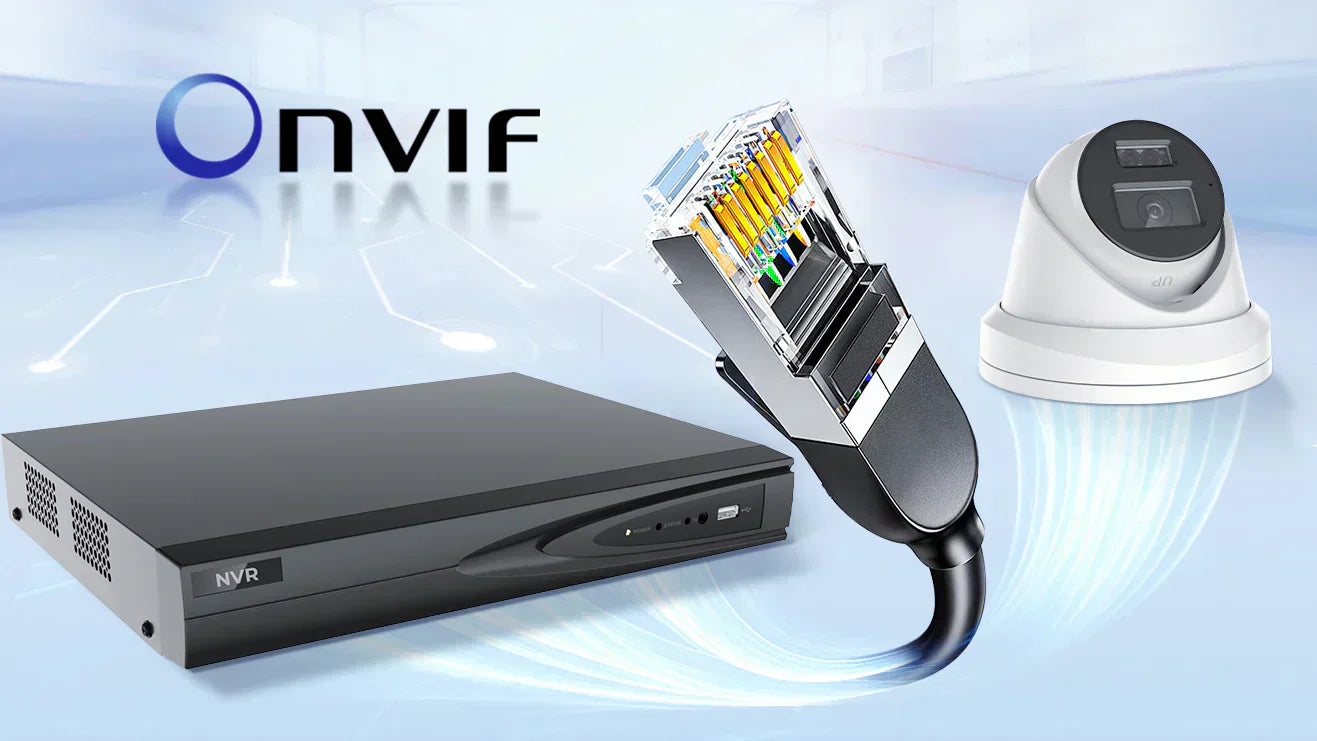
What is ONVIF?
ONVIF (Open Network Video Interface Forum) is a global and open industry forum founded to standardize IP-based security devices, facilitating integration and communication across different brands. Simply put, the ONVIF standard allows an IP camera from one brand to seamlessly integrate and operate with an NVR (network video recorder) from another brand.
Understanding ONVIF Profiles
To ensure that products from different manufacturers can work together seamlessly by providing a common set of functionalities that devices must support, ONVIF created profiles. Below is a table of commonly used ONVIF profiles for IP cameras and NVR recorders.
| Profile C | Profile G | Profile S | Profile T |
|
|
|
|
|
|
|
|
|
|
|
|
|
|
Thanks to these ONVIF profiles, devices from different manufacturers can work together easily, minimizing compatibility issues. This flexibility allows users to combine devices from various brands to meet their specific needs, offering customized solutions for various security scenarios. Additionally, it helps reduce costs for both manufacturers and consumers by avoiding the need for exclusive, proprietary systems.
However, reality can be challenging. Many manufacturers interpret ONVIF standards in their own way, which can cause compatibility problems. Additionally, advanced features might not work the same across all devices, limiting their effectiveness and potentially wasting money spent on high-end security equipment. These challenges make it harder for professional installers, not to mention end users, to manage their systems.
Here we will address some frequently asked questions about ONVIF.
How do I know if my camera is compliant?
ONVIF does not provide certificates of conformance, and compliance is based on self-declaration by manufacturers. To determine if your device is ONVIF compliant, you can check the datasheet of your device or directly ask the manufacturer. For HITOSINO, Valucam, Hikvision, and Dahua, all cameras and NVRs are ONVIF compliant. Learn more about our products.
Can ONVIF complaint products from different manufacturers work together?
Generally, they should work together. However, there are several factors that can affect compatibility. The ONVIF version of the devices can impact their interoperability; for instance, if the ONVIF version of the camera is higher than that of the NVR, they might not function together seamlessly. Additionally, optional functions not implemented by both devices may not be usable, meaning that even if the devices are ONVIF compliant, they might not support all the advanced features, such as two-way audio, human and vehicle detection, or video content analysis like face detection, intrusion detection, line crossing, and more. Furthermore, the quality of the implementation by manufacturers can affect interoperability, as variations in how manufacturers implement ONVIF standards can lead to compatibility issues.
My camera is ONVIF compliant, how can I choose a perfectly compatible NVR?
In most cases, you will get a video stream from the ONVIF camera but no other features. Motion detection, two-way audio, camera settings, PTZ control, and any higher-end functions may not work properly. The only way to know for sure is to test your ONVIF camera with the standalone NVR you intend to use. Different firmware versions on cameras and recorders provide varying degrees of compatibility, making it impossible for either camera or recorder manufacturers to definitively answer that question unless the exact camera and recorder models have been tested to work together.
How do I know what cameras I can use with my system?
When selecting cameras for your system, it’s essential to be cautious, especially when purchasing from different companies. The most effective approach is to contact the manufacturer directly to verify whether the camera and NVR can work seamlessly together and to understand which functions will work and which might not.
What should I do if my ONVIF camera is not working as expected?
We recommend following these steps to troubleshoot and resolve the issue:
- Check the IP Address Configuration: Ensure the IP address configuration matches the network settings of your NVR or VMS.
- Verify the ONVIF Profile: Confirm that the correct ONVIF profile is enabled and that the camera is compatible with your NVR or VMS.
- Ensure Accurate Account Information: Make sure you input your account correctly when adding cameras to your NVR.
- Update Firmware: Update the firmware on both the camera and the recorder, as manufacturers frequently release updates to improve compatibility and performance.
- Reset to Factory Settings: If problems persist, reset the device to factory settings and reconfigure it.
- Contact Support: Finally, contact the manufacturer’s support team for further assistance, providing detailed information about your setup and any error messages encountered.
Conclusion
The contribution of ONVIF to creating a common platform for communication and integration in the security industry is both significant and invaluable. While there are inherent challenges and areas for improvement, ONVIF has made remarkable strides in promoting interoperability among IP-based security devices. To meet the increasingly complex security demands, we believe ONVIF will continue to address these challenges, further enhancing the functionality and compatibility of security systems.
If you still encounter issues with connections, please don’t hesitate to contact us at support@hitosino.com. We are always here to help you. For additional resources, check out our FAQ and support center.
For more assistance in making the right choices for security cameras, feel free to reach out to us at Whatsapp 86-13242036219.

